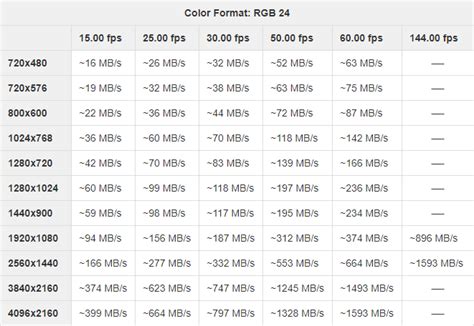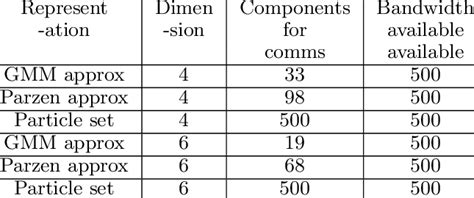Introduction to Bandwidth Requirements
Bandwidth is a crucial concept in the field of electronics and communication systems. It refers to the range of frequencies that a signal or system can effectively transmit or process. Understanding bandwidth requirements is essential for designing and analyzing various electronic systems, including those that utilize differential signals.
In this article, we will explore the concept of bandwidth requirements, with a specific focus on differential signals. We will delve into the fundamentals of bandwidth, its significance in electronic systems, and the factors that influence bandwidth requirements. Additionally, we will discuss the advantages of using differential signals and how they impact bandwidth considerations.
Understanding Bandwidth
Definition of Bandwidth
Bandwidth is defined as the range of frequencies over which a signal or system can operate effectively. It represents the difference between the highest and lowest frequencies that a system can handle without significant attenuation or distortion.
Mathematically, bandwidth can be expressed as:
Bandwidth = Highest Frequency – Lowest Frequency
For example, if a system can operate effectively from 100 MHz to 500 MHz, its bandwidth would be:
Bandwidth = 500 MHz – 100 MHz = 400 MHz
Significance of Bandwidth
Bandwidth plays a vital role in various aspects of electronic systems, including:
-
Data Transmission: Bandwidth determines the maximum amount of data that can be transmitted over a communication channel in a given time period. Higher bandwidth allows for faster data transmission rates.
-
Signal Integrity: Adequate bandwidth ensures that signals maintain their integrity as they propagate through a system. Insufficient bandwidth can lead to signal distortion, attenuation, and loss of information.
-
System Performance: The overall performance of an electronic system is often limited by its bandwidth. Systems with higher bandwidth can process and respond to signals more quickly, enabling faster operation and improved efficiency.
-
Noise Immunity: Bandwidth also affects a system’s ability to reject noise and interference. Wider bandwidth allows for better separation of desired signals from unwanted noise components.

Factors Affecting Bandwidth Requirements
Several factors influence the bandwidth requirements of an electronic system. Understanding these factors is crucial for designing systems that can effectively handle the desired signals. Let’s explore some of the key factors:
Signal Frequency
The frequency of the signals being processed or transmitted is a primary factor in determining bandwidth requirements. Higher frequency signals require wider bandwidth to accommodate their rapid variations and maintain signal integrity.
For example, consider a system that needs to process signals with frequencies ranging from 100 MHz to 500 MHz. The bandwidth required for such a system would be at least 400 MHz to ensure proper handling of the entire frequency range.
Data Rate
The data rate, or the amount of data being transmitted per unit time, also impacts bandwidth requirements. Higher data rates demand wider bandwidth to accommodate the increased amount of information being sent.
Let’s consider an example of a digital communication system transmitting data at a rate of 1 Gbps (gigabits per second). To achieve this data rate, the system would require a bandwidth of at least 500 MHz, assuming a simple binary modulation scheme.
Modulation Scheme
The modulation scheme employed in a communication system also influences bandwidth requirements. Different Modulation Techniques have varying bandwidth efficiencies, which determine how much data can be transmitted within a given bandwidth.
For instance, let’s compare two modulation schemes: binary phase-shift keying (BPSK) and quadrature phase-shift keying (QPSK). BPSK requires a bandwidth equal to the data rate, while QPSK can transmit twice the data rate within the same bandwidth. Therefore, the choice of modulation scheme can significantly impact bandwidth requirements.
Channel Characteristics
The characteristics of the communication channel or medium also play a role in determining bandwidth requirements. Factors such as attenuation, dispersion, and interference can limit the usable bandwidth of a channel.
For example, in a wireless communication system, the presence of obstacles, multipath propagation, and interference from other devices can degrade the available bandwidth. In such cases, higher bandwidth may be required to compensate for channel impairments and ensure reliable communication.

Differential Signals and Bandwidth
Differential signaling is a technique widely used in high-speed electronic systems to improve signal integrity and noise immunity. It involves transmitting information using two complementary signals, where the difference between the signals represents the actual data.
Advantages of Differential Signals
Differential signals offer several advantages over single-ended signals, particularly in terms of bandwidth and signal integrity:
-
Noise Immunity: Differential signals are inherently more resistant to common-mode noise and interference. Any noise that affects both signal lines equally is canceled out when the receiver takes the difference between the two signals.
-
Reduced Electromagnetic Interference (EMI): Differential signals generate less EMI compared to single-ended signals. The complementary nature of the signals leads to the cancellation of electromagnetic fields, reducing the overall EMI emitted by the system.
-
Higher Bandwidth: Differential signaling allows for higher bandwidth compared to single-ended signaling. The use of two signal lines effectively doubles the available bandwidth, enabling faster data transmission rates.
-
Improved Signal Integrity: Differential signals maintain better signal integrity over longer distances. The complementary nature of the signals helps to mitigate the effects of attenuation, dispersion, and other channel impairments.
Bandwidth Considerations for Differential Signals
When designing systems that utilize differential signals, it is important to consider the bandwidth requirements specific to differential signaling:
-
Balanced Transmission Lines: Differential signals require balanced transmission lines, such as twisted-pair cables or differential traces on a printed circuit board (PCB). The bandwidth of the transmission line should be sufficient to support the desired signal frequencies and data rates.
-
Termination: Proper termination is crucial for maintaining signal integrity and preventing reflections in differential signaling systems. The termination resistors should be chosen based on the characteristic impedance of the transmission line and the desired bandwidth.
-
Skew and Jitter: Differential signals are sensitive to skew and jitter, which can impact the effective bandwidth. Skew refers to the timing difference between the two signal lines, while jitter represents the timing variations of the signal transitions. Minimizing skew and jitter is essential for achieving the desired bandwidth and signal integrity.
-
Equalization: In high-speed differential signaling systems, equalization techniques may be employed to compensate for channel impairments and extend the usable bandwidth. Equalization circuits, such as pre-emphasis and de-emphasis, help to flatten the frequency response of the channel and improve signal quality.

Bandwidth Analysis Techniques
Analyzing bandwidth requirements is an important step in designing and optimizing electronic systems. Several techniques can be used to assess bandwidth, including:
Frequency Domain Analysis
Frequency domain analysis involves examining the frequency spectrum of signals and systems. Tools such as spectrum analyzers and network analyzers are commonly used to measure the frequency response and bandwidth of a system.
By analyzing the frequency spectrum, designers can identify the range of frequencies over which the system operates effectively. They can also assess the presence of any unwanted frequency components, such as noise or harmonics, that may impact system performance.
Time Domain Analysis
Time domain analysis focuses on examining signals and systems in the time domain, typically using oscilloscopes or logic analyzers. This technique allows designers to observe the temporal characteristics of signals, such as rise times, fall times, and pulse widths.
Time domain analysis is particularly useful for assessing the impact of bandwidth limitations on signal integrity. By observing the time-domain waveforms, designers can identify issues such as signal distortion, ringing, or intersymbol interference (ISI) that may result from insufficient bandwidth.
Eye Diagrams
Eye diagrams are a powerful tool for analyzing the quality and integrity of high-speed digital signals. An eye diagram is created by overlaying multiple waveforms of a digital signal, forming a pattern resembling an eye shape.
Eye diagrams provide valuable information about the signal’s characteristics, including:
- Eye opening: The height of the eye opening represents the signal’s noise margin and the system’s ability to distinguish between logic levels.
- Eye width: The width of the eye opening indicates the timing margin and the system’s tolerance to jitter and skew.
- Signal transitions: The slopes of the eye diagram reveal the rise and fall times of the signal, which are related to the system’s bandwidth.
By analyzing eye diagrams, designers can assess the overall signal quality and determine if the system has sufficient bandwidth to support the desired data rates and signal integrity.
Bandwidth Optimization Techniques
In many cases, electronic systems may face bandwidth limitations due to various factors such as channel characteristics, component limitations, or cost constraints. To overcome these challenges and maximize the available bandwidth, designers can employ several optimization techniques:
Equalization
Equalization is a technique used to compensate for the frequency-dependent losses and distortions introduced by the channel or system. By applying appropriate equalization, designers can flatten the frequency response and extend the usable bandwidth.
There are two main types of equalization:
-
Pre-emphasis: Pre-emphasis is applied at the transmitter side, where the high-frequency components of the signal are amplified before transmission. This compensates for the high-frequency losses in the channel and improves the signal quality at the receiver.
-
De-emphasis: De-emphasis is applied at the receiver side, where the low-frequency components of the signal are attenuated. This helps to equalize the overall frequency response and reduces the impact of low-frequency noise and interference.
Equalization techniques can be implemented using analog circuits, such as passive or active filters, or through digital signal processing algorithms.
Modulation Schemes
The choice of modulation scheme can significantly impact the bandwidth efficiency of a communication system. By selecting a modulation technique with higher bandwidth efficiency, designers can transmit more data within a given bandwidth.
For example, advanced modulation schemes like quadrature amplitude modulation (QAM) and orthogonal frequency-division multiplexing (OFDM) can achieve higher data rates compared to simpler schemes like amplitude shift keying (ASK) or frequency shift keying (FSK).
However, it’s important to note that higher-order modulation schemes often require more complex transmitter and receiver designs and may be more susceptible to noise and channel impairments.
Signal Conditioning
Signal conditioning techniques can be applied to improve the quality and integrity of signals within the available bandwidth. Some common signal conditioning techniques include:
-
Filtering: Filters can be used to remove unwanted frequency components, such as noise or harmonics, from the signal. By attenuating out-of-band interference, filters help to optimize the use of available bandwidth.
-
Amplification: Amplifiers can be employed to boost the signal strength and compensate for losses in the system. However, it’s important to ensure that the amplifiers have sufficient bandwidth to handle the desired signal frequencies without introducing distortion.
-
Impedance Matching: Proper impedance matching is crucial for maximizing power transfer and minimizing reflections in a system. By matching the impedances of the source, transmission line, and load, designers can optimize signal integrity and bandwidth utilization.
System-Level Considerations
In addition to circuit-level techniques, system-level considerations can also play a role in optimizing bandwidth:
-
Architectural Choices: The overall architecture of an electronic system can impact bandwidth requirements. For example, using parallel processing or pipelining techniques can help to distribute the bandwidth demands across multiple paths or stages, reducing the burden on individual components.
-
Interconnect Design: The design of interconnects, such as PCB traces or cables, can significantly affect bandwidth. Proper layout, impedance control, and shielding techniques can minimize signal integrity issues and optimize bandwidth utilization.
-
Timing and Synchronization: Accurate timing and synchronization are essential for high-speed systems operating near their bandwidth limits. Techniques such as clock recovery, phase-locked loops (PLLs), and delay-locked loops (DLLs) can help to maintain proper timing relationships and minimize jitter and skew.
Real-World Applications
Bandwidth requirements and optimization techniques find applications in various domains, including:
-
High-Speed Digital Interfaces: Interfaces like USB, PCIe, HDMI, and Ethernet require careful bandwidth considerations to ensure reliable and efficient data transmission.
-
Wireless Communication Systems: Wireless technologies, such as 5G, Wi-Fi, and Bluetooth, rely on efficient bandwidth utilization to accommodate increasing data rates and user demands.
-
Radar and Sensing Applications: Radar systems and sensors often operate over wide frequency ranges and require adequate bandwidth to achieve high resolution and accuracy.
-
Instrumentation and Measurement: High-bandwidth oscilloscopes, spectrum analyzers, and other measurement instruments are crucial for capturing and analyzing fast-changing signals and phenomena.
-
Optical Communication Networks: Fiber-optic communication systems leverage the vast bandwidth of optical fibers to transmit data over long distances at high speeds.
Frequently Asked Questions (FAQ)
-
What is the difference between bandwidth and data rate?
Bandwidth refers to the range of frequencies that a system can effectively process or transmit, while data rate represents the amount of data transmitted per unit time. Bandwidth sets an upper limit on the achievable data rate, but the actual data rate may be lower due to factors such as modulation scheme, channel conditions, and signal-to-noise ratio. -
How does increasing the bandwidth affect signal integrity?
Increasing the bandwidth of a system can improve signal integrity by allowing faster signal transitions and reducing the impact of frequency-dependent losses and distortions. However, wider bandwidth also means that the system becomes more susceptible to high-frequency noise and interference, which can degrade signal quality if not properly addressed. -
What are the advantages of using differential signals over single-ended signals?
Differential signals offer several advantages over single-ended signals, including improved noise immunity, reduced electromagnetic interference (EMI), higher bandwidth, and better signal integrity over longer distances. Differential signaling cancels out common-mode noise and interference, making it suitable for high-speed and noise-sensitive applications. -
How can equalization techniques help to optimize bandwidth?
Equalization techniques, such as pre-emphasis and de-emphasis, can compensate for the frequency-dependent losses and distortions introduced by the channel or system. By applying appropriate equalization, designers can flatten the frequency response, extend the usable bandwidth, and improve signal quality. Equalization helps to mitigate the effects of high-frequency attenuation and intersymbol interference (ISI). -
What are some system-level considerations for optimizing bandwidth?
System-level considerations for optimizing bandwidth include architectural choices, interconnect design, and timing and synchronization techniques. Parallel processing and pipelining can distribute bandwidth demands across multiple paths or stages. Proper layout, impedance control, and shielding of interconnects minimize signal integrity issues. Accurate timing and synchronization, using techniques like clock recovery and phase-locked loops (PLLs), help to maintain proper timing relationships and minimize jitter and skew.
Conclusion
Bandwidth requirements play a crucial role in the design and analysis of electronic systems, particularly those involving differential signals. Understanding the factors that influence bandwidth, such as signal frequency, data rate, modulation scheme, and channel characteristics, is essential for designing systems that can effectively handle the desired signals.
Differential signaling offers advantages in terms of noise immunity, EMI reduction, and signal integrity, making it a popular choice for high-speed applications. However, differential signals also require careful consideration of bandwidth requirements, including balanced transmission lines, proper termination, and management of skew and jitter.
Analyzing bandwidth using techniques like frequency domain analysis, time domain analysis, and eye diagrams helps designers assess system performance and identify potential issues. Optimization techniques, such as equalization, modulation scheme selection, signal conditioning, and system-level considerations, can be employed to maximize the available bandwidth and improve signal quality.
Bandwidth requirements find applications in various domains, including high-speed digital interfaces, wireless communication systems, radar and sensing, instrumentation and measurement, and optical communication networks.
By understanding and addressing bandwidth requirements, designers can create robust and efficient electronic systems that can reliably transmit and process signals in demanding applications. As technology continues to advance and data rates keep increasing, the importance of bandwidth considerations will only continue to grow.

No responses yet